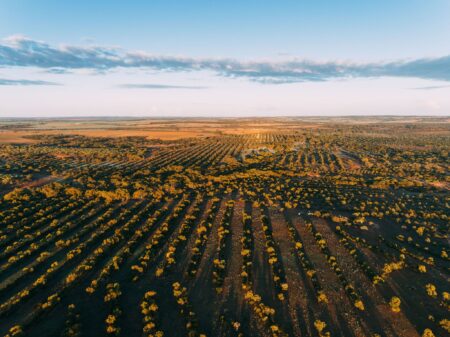Carbon-neutral initiatives in Australia are rapidly evolving from policy promises to tangible nationwide efforts, spanning federal legislation, corporate innovation, grassroots action, and cutting-edge technology. With Australia historically ranked among the world’s highest per capita emitters of greenhouse gases, the push toward decarbonization is both a global obligation and a domestic necessity. As the country navigates its commitment to achieving net-zero emissions by 2050, a multi-pronged approach is emerging—one that leverages clean energy, community resilience, business accountability, and regional policy leadership.
Australia’s federal government has taken significant steps to cement its environmental responsibilities. The Department of Climate Change, Energy, the Environment and Water oversees the national climate agenda, working in tandem with instruments like the Clean Energy Regulator, which manages Australia’s carbon credit market. Landmark legislation such as the Climate Change Act 2022 mandates periodic reporting of emissions reduction targets, ensuring governmental transparency and public accountability. This legislative foundation supports carbon-neutral initiatives in Australia, promoting trust and consistency across sectors.
Meanwhile, regional and local governments are playing a crucial role. Councils like the City of Melbourne and Byron Shire have declared climate emergencies and initiated comprehensive local sustainability programs. Victoria’s pledge to cut emissions by 50% by 2030, supported by the Victorian Government’s Department of Energy, Environment and Climate Action, highlights how state-level ambition is fueling national progress. In fact, the Australian Capital Territory now runs entirely on renewable electricity, demonstrating the feasibility of a fully decarbonized grid.
At the industry level, major corporations are aligning with international standards for sustainability. Organizations like BHP and Telstra have embedded net-zero commitments into their core strategies, publishing detailed annual environmental reports and investing in low-emission technologies. Retail leaders such as Woolworths Group are innovating supply chains, using sustainable packaging and increasing waste diversion rates. These firms work closely with agencies like the Clean Energy Finance Corporation, which has invested more than AUD 10 billion in clean energy initiatives since 2012. Together, these developments showcase how corporate action underpins carbon-neutral initiatives in Australia.
Innovation in clean energy is also transforming the technological landscape. With over 3.6 million rooftop solar systems installed across the country, Australia leads the world in per capita solar adoption, as confirmed by the Australian Renewable Energy Agency. Projects such as the Tesla Big Battery at Hornsdale and the proposed Asian Renewable Energy Hub in Western Australia underscore the importance of large-scale battery storage and green hydrogen in enabling a reliable, renewable-powered grid. The potential of smart grids and real-time digital energy monitoring is also being explored by partners like CSIRO, paving the way for intelligent, decentralized energy systems.
Moreover, community-led initiatives—like those championed by the Australian Youth Climate Coalition or the cooperative model of Hepburn Wind—are galvanizing public engagement. From Indigenous carbon farming to zero-waste movements, Australians are taking environmental stewardship into their own hands, proving that national change begins at the grassroots. These bottom-up contributions are an integral part of the broad and ambitious framework of carbon-neutral initiatives in Australia.
Pioneering Policies Driving Carbon Neutrality
Governmental Net-Zero Commitments
The Australian government has officially committed to achieving net-zero emissions by 2050. This pledge, made in 2021, aligned Australia with over 130 other nations that have declared similar goals. As part of this effort, the federal government introduced the Low Emissions Technology Statement, aiming to invest over AUD 20 billion by 2030 to support clean technologies such as hydrogen, carbon capture and storage (CCS), and low-carbon materials. These commitments are central to supporting carbon-neutral initiatives in Australia.
State-Level Leadership and Initiatives
States like Victoria and New South Wales have implemented their own climate action plans. Victoria, for instance, has legislated a 45–50% reduction in emissions by 2030, while the Australian Capital Territory (ACT) has already reached 100% renewable electricity. Queensland has pledged to reach 70% renewable energy by 2032. Such decentralized efforts further amplify the reach and effectiveness of carbon-neutral initiatives in Australia.
Funding Mechanisms and Incentives
Financial tools such as the AUD 1.9 billion ARENA fund (Australian Renewable Energy Agency) and the Clean Energy Finance Corporation (CEFC), which has invested over AUD 10 billion since 2012, are helping industries transition. Tax incentives for electric vehicles and subsidies for residential solar panels are also encouraging individual contributions to carbon neutrality.
Legislative Framework and Accountability
Australia passed the Climate Change Act 2022, which mandates transparency and progress reporting to Parliament on climate goals. This legislation strengthens oversight, making carbon neutrality a legal obligation rather than an aspirational goal. By setting clear milestones, Australia can monitor its journey toward a sustainable future.
International Collaboration and Trade Impact
Australia is increasingly aligning its trade agreements with environmental policies. The Carbon Border Adjustment Mechanism (CBAM) by the EU has pushed Australia to ensure its exports meet carbon-neutral standards. This pressure boosts policy reform and integration with global climate governance.
Innovative Technologies Powering a Greener Future
Green Hydrogen as a Clean Fuel Alternative
Australia is investing heavily in green hydrogen, aiming to become a global exporter by 2030. Projects like the AUD 22 billion Asian Renewable Energy Hub in Western Australia plan to generate 26 GW of renewable energy. Hydrogen will be crucial to the decarbonization of heavy industries, a pillar of carbon-neutral initiatives in Australia.
Battery Storage and Grid Stabilization
The Hornsdale Power Reserve in South Australia, home to the Tesla Big Battery, has delivered over AUD 150 million in savings to consumers since its launch in 2017. This 150 MW/194 MWh system enhances grid reliability and enables more solar and wind integration. Large-scale battery investments are expanding across New South Wales and Victoria as part of the national energy transition.
Carbon Capture and Storage (CCS) Developments
Santos’ Moomba CCS project in South Australia, costing AUD 220 million, is expected to store up to 1.7 million tonnes of CO₂ annually. Though controversial, CCS remains a key technology in bridging the gap for emissions-intensive sectors during the energy transition.
Smart Grids and Digital Energy Management
Digital innovations are optimizing energy use. Smart meters, AI-driven energy monitoring, and real-time data platforms are now used in over 30% of Australian homes. These technologies enhance consumer control and reduce overall energy consumption—critical to sustaining carbon-neutral initiatives in Australia.
Solar and Wind Innovation Hubs
Australia is the world leader in rooftop solar per capita, with over 3.6 million systems installed by 2024. Wind energy now contributes nearly 10% of the national electricity mix. The development of offshore wind farms, especially in Victoria, is expected to add 9 GW to the grid by 2035.
Grassroots Movements and Community-Led Action
Local Government Climate Action Plans
Over 100 local councils across Australia have declared climate emergencies. Councils such as Darebin in Victoria and Byron Shire in New South Wales have set ambitious goals to become carbon neutral by 2030. These community-driven policies reflect how local authorities are spearheading carbon-neutral initiatives in Australia.
Indigenous-Led Sustainability Projects
Aboriginal communities are leading land regeneration and carbon farming projects. The Arnhem Land Fire Abatement project in the Northern Territory reduces greenhouse gas emissions through controlled burns and generates carbon credits. It has avoided over 1 million tonnes of CO₂ annually and provides jobs and income for Indigenous rangers.
Community Solar and Energy Cooperatives
Programs like the Hepburn Wind cooperative in Victoria enable local residents to invest in and benefit from renewable energy projects. With two wind turbines generating enough electricity for over 2,000 homes, the project exemplifies successful grassroots mobilization toward energy sovereignty and carbon neutrality.
Educational Campaigns and Youth Advocacy
Organizations such as the Australian Youth Climate Coalition (AYCC) and School Strike 4 Climate have galvanized thousands of young Australians. In 2019, over 350,000 people joined national climate marches, showcasing strong public demand for bold environmental action and support for carbon-neutral initiatives in Australia.
Sustainable Lifestyles and Zero-Waste Movements
Citizens are embracing zero-waste living, plant-based diets, and eco-friendly transport. According to a 2023 CSIRO report, 29% of Australians have significantly reduced their carbon footprints through daily lifestyle changes. This shift in public behavior supports larger policy frameworks.
Australia’s Corporate Commitment to Net-Zero Goals
Corporate Net-Zero Pledges and Reporting
Major Australian companies like BHP, Qantas, and Telstra have committed to net-zero targets. BHP aims to achieve net-zero operational emissions by 2050, while Qantas has pledged to offset all domestic emissions by 2030. Transparent ESG reporting is now common among ASX-listed companies, reflecting increasing corporate alignment with carbon-neutral initiatives in Australia.
Green Building Standards and Certifications
The Green Building Council of Australia has certified over 3,000 buildings under its Green Star rating system. These buildings use up to 66% less electricity and produce 62% fewer greenhouse gas emissions compared to average buildings. Commercial real estate developers are now prioritizing sustainable architecture as a business imperative.
Sustainable Supply Chains and Procurement
Retail giants such as Woolworths and Coles are incorporating sustainable practices in logistics and packaging. Woolworths has committed to 100% renewable electricity by 2025 and has already diverted over 80% of its waste from landfills. These efforts support comprehensive carbon-neutral initiatives in Australia’s retail sector.
Carbon Offsetting and Credit Markets
Australia has one of the world’s most active voluntary carbon markets. The Clean Energy Regulator reports over 100 million Australian Carbon Credit Units (ACCUs) have been issued since 2011. Companies use these credits to offset emissions from hard-to-abate sectors, playing a vital role in reaching net-zero.
Corporate Renewable Energy Investments
Amazon, Google, and Microsoft have invested in renewable energy projects across Australia. Amazon’s 2022 wind and solar investments in New South Wales are expected to produce 717,000 MWh annually—enough to power 115,000 homes. Such investments highlight how global corporations are bolstering carbon-neutral initiatives in Australia.




